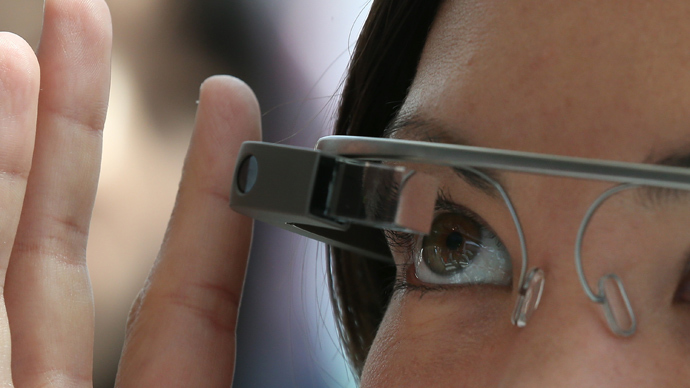Hackers give Google Glass facial recognition capability

Google’s head-mounted computer Glass has yet to hit stores, though the Palo Alto company is already facing backlash from privacy advocates due to the device’s camera. One firm has even adapted Glass to perform facial recognition despite their protests.
Lambda Labs founder Stephen Balaban is only one of the many
individuals who are coming up with new functions for Glass, some
which its Google designers may not have intended. More than
embedding a few new functions into the device, Balaban aims to
create an entirely new software for it.
"Essentially what I am building
is an alternative operating system that runs on Glass but is not
controlled by Google," he tells NPR.
By supplanting Glass' original operating system, Balaban has
already managed to create a feature that can perform facial
recognition using the forward-mounted camera.
According to Balaban, Google did not react well when he announced
his intention to modify their device to recognize human facial
features. In response, the company changed the terms of service
to ban the practice, though developers at Lambda Labs seemed
undeterred.
"Don't worry, we think it's a
core feature. Google will allow it or be replaced with something
that does," tweeted Lambda on June 1.
Though Glass may be Google’s hardware, it is not entirely clear
whether they can actually block the device from performing tasks
prohibited by their policies. The company also intentionally gave
the first batch of the devices to those it deemed “Glass Explorers” - developers with
high technical skills and other individuals who proposed
inventive uses for the device.
"We're looking for bold,
creative individuals who want to join us and be a part of shaping
the future of Glass," the company said in February.
Developers with access to the first round of Glass headsets are
able to load apps, which Google refers to as “Glassware,” without having to
secure the company’s permission. The device can then communicate
with services such as Lambda Labs’ paid facial recognition
feature.
As The Guardian reports, Google has the option to remotely 'kill'
undesirable software for Glass, or force software updates that
can block certain devices, much as Apple often updates the
operating systems for the iPhone to block 'jailbroken' devices
running applications outside of its App Store ecosystem.
Already Google has faced pushback on services that some think go
too far in invading personal privacy. Google Map’s Streetview
feature, for example, has been subjected to scrutiny in countries
such as Germany, where residents were able to request that images
of their homes be blurred.
Partly in response to privacy concerns, Google has avoided
features such as facial recognition with its Android mobile phone
operating system, though the camera-centric aspects of Glass may
make the feature unavoidable.
Even if Google has publicly stated its opposition to facial
recognition technology, the controversy is unlikely to end that
easily. The device has even attracted the attention of lawmakers
in Congress, a group of which sent Google chief executive Larry
Page a letter demanding to know how the company could prevent the
“unintentional”
harvesting of data and protect the privacy of those in the line
of sight of the headsets.
Google designers have included small cues, such as the necessary
verbal commands and a small tap to take an image to try and make
the device’s functions transparent, though as hackers such as
Lambda Labs are already proving, that may be an uphill battle.
Aside from the facial recognition service, the company recently
launched what it calls a “Lifestream” backup tool that can
stream a flurry of all images taken by a user wearing the device.
Couple such a feature with facial recognition services, and the
device’s capabilities begin to take shape.











